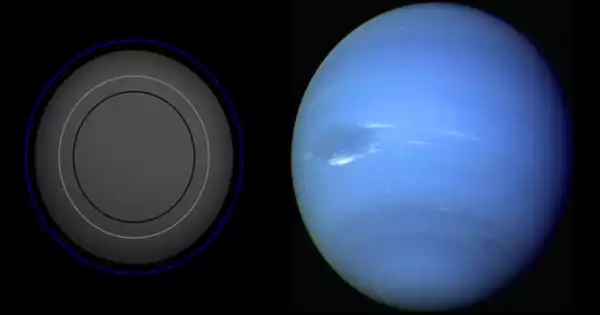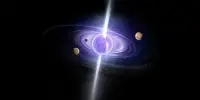Gliese 581b, often known as Gl 581b, is an extrasolar planet that orbits within the Gliese 581 system. It is the second in order of the three currently known planets, and it was the first planet identified in the Gliese 581 system. It is the first of four confirmed planets in the system, and the second in order from the star.
The planet was discovered by a team of French and Swiss astronomers on November 30, 2005. It was the fifth planet identified circling a red dwarf star, following the planets of Gliese 876 and Gliese 436 b. It is located about 20 light years from Earth in the constellation Libra.
Discovery
A team of French and Swiss astronomers discovered the planet, which was announced on November 30, 2005, as one of the smallest extrasolar planets ever discovered, with one conclusion being that planets may be more prevalent near the smallest stars. It was the fifth planet discovered in the vicinity of a red dwarf star (after the planets discovered orbiting Gliese 876 and Gliese 436 b).
The planet was discovered with the HARPS instrument, which detected a wobble in the host star, implying the presence of a planet. The results were reported in Astronomy and Astrophysics Letters by the astronomers.

Orbit and mass
Gliese 581b has a minimum mass of approximately 15.8 times that of Earth, which is comparable to Neptune’s mass. It does not pass through its star, indicating that its inclination is less than 88.1 degrees. It is relatively near to Gliese 581 and completes a full orbit in 5.4 days at a mean distance of approximately 6 million kilometers (0.041 AU). Mercury, on the other hand, is 58 million kilometers (0.387 AU) away and completes an orbit in 88 days.
This is comparable to Neptune’s mass, implying that the planet could be a Hot Neptune. It orbits Gliese 581 every 5.4 days and is quite close to it. It travels in a highly circular orbit. Not much is known about the characteristics of this planet since it does not transit its host star.
Characteristics
Gliese 581b is around 0.04 AU from its star. It is expected to be similar to Gliese 436 b in mass, temperature, and vulnerability to solar impacts such as coronal mass ejection (together with Gliese 876 d). Gliese 581b is not a transit route. Given that Gliese 581b orbits two additional planets (Gliese 581c and e) and Gliese 436 b (so far) sits alone, their formation must have been different.
Gliese 581 is a red dwarf in the constellation Libra that is 20.5 light-years away from Earth. It, like other red dwarfs, is substantially smaller and brighter than our sun. Gliese 581 is thought to be old — at least a few billion years old — and relatively steady.
















